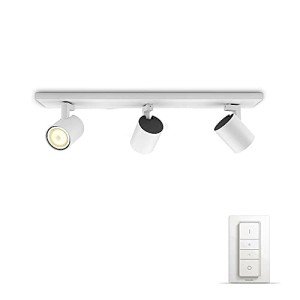Interior Lighting in the UK: A Comprehensive Guide
Interior lighting plays a crucial function in producing an environment, enhancing performance, and revealing individual style within homes and services. In the UK, where the weather can be unpredictable, efficient lighting is not just about aesthetics however also about making areas feel warm, inviting, and useful. This article looks into various aspects of interior lighting, incorporating types, trends, ideas, and frequently asked questions.
Comprehending the Importance of Interior Lighting
Lighting is typically considered the foundation of interior decoration. It affects mood, functionality, and the perceived size of areas. The best lighting can:
- Enhance the architectural features of a room.
- Emphasize artwork and decoration.
- Improve security and security.
- Impact efficiency in work spaces.
- Produce a comfortable atmosphere for relaxation.
Types of Interior Lighting
Efficient lighting design usually integrates three primary kinds of lighting: ambient, job, and accent.
1. Ambient Lighting
This is the primary source of light in a room, supplying general lighting. Common sources consist of:
- Ceiling-mounted fixtures
- Chandeliers
- Recessed lighting
- Soft wall sconces
Ambient lighting creates a foundation from which other lighting types can develop upon.
2. Job Lighting
Task lighting concentrates on specific areas to facilitate activities such as reading, cooking, or working. This type of lighting helps to decrease eye pressure and can considerably affect functionality. Common sources include:
- Desk lamps
- Under-cabinet lights in cooking areas
- Checking out lamps beside beds
- Mounted lights targeted at work surface areas
3. Accent Lighting
Accent lighting includes drama and highlights specific things or areas, such as artwork or architectural features. This kind of lighting can produce visual interest and depth in an area. Sources include:
- Picture lights
- Decorative lamps
- Uplighters
- LED strip lights along shelves
Using a combination of these lighting types can lead to a healthy and multifunctional space.
Popular Lighting Trends in the UK
The interior lighting landscape in the UK continues to evolve, affected by design patterns, technology, and consumer preferences. Here are some popular trends to view:
- Smart Lighting: The arrival of smart technology has transformed how individuals manage lighting in their homes. Smart bulbs and systems like Philips Hue enable users to manage brightness and color temperature by means of their smart devices.
- Minimalist Designs: Sleek, basic designs that blend perfectly with interiors are controling the market. Pendant lights with fragile frames, LED strips, and geometric shapes are especially stylish.
- Industrial Lighting: This trend showcases raw, disclosed materials. Buy Outdoor Lamps UK and Edison bulbs offer a vintage touch that is both stylish and practical.
- Eco-Friendly Options: With increasing awareness of sustainability, lots of customers are turning to energy-efficient LED alternatives and fixtures made from sustainable products.
Tips for Effective Interior Lighting Design
Designing an efficient lighting strategy needs thoughtful factor to consider of different aspects. Here are some pointers:
- Consider the Purpose of Each Room: Every space has a different function. Consider what Shop Lighting UK will occur and what kind of lighting will support those activities.
- Layer Lighting: Employ multiple types of lighting within a room to develop depth and versatility. Integrate ambient, task, and accent lighting to enhance both looks and functionality.
- Use Dimmers: Dimmers permit control over brightness levels, making it possible for users to change lighting according to state of mind and time of day.
- Include Natural Light: Make the most of natural lights like windows. Usage light, reflective colors for walls and furnishings to make the most of brightness.
- Consider Color Temperature: Different color temperatures (measured in Kelvins) develop different environments. Warmer temperatures (around 2700K-3000K) are comfortable, while cooler temperature levels (4000K+) provide a more medical or energetic feel.
Interior Lighting Mistakes to Avoid
To create a well-lit area, it's vital to prevent common lighting mistakes. Here are some mistakes to expect:
- Underestimating Wattage: Insufficient wattage can lead to dim, unwelcoming areas.
- Ignoring Scale: Fixtures that are too little for a room can watch out of place, while oversized fixtures can overwhelm an area.
- Over-reliance on Ceiling Lights: Relying exclusively on overhead lighting can develop uninviting shadows; balance with additional lighting types.
- Poor Placement: Misplaced lights can create locations that are too intense or too dark. Strategy placements thoughtfully.
FAQ Section
1. What is the distinction in between warm white and cool white light?
Warm white light (2700K to 3000K) produces a cozy, welcoming environment, ideal for living spaces and bed rooms, while cool white light (4000K to 5000K) is more fit for workspaces as it boosts concentration and clarity.
2. How can I take full advantage of natural light in my home?
To maximize natural light, usage light-colored walls, tactically location mirrors to reflect light, and choose for sheer window coverings that permit sunlight to go through.
3. How do I select the ideal lighting fixture?
Consider the size of your area, the style of your design, and the function of the area. Make sure the scale of fixtures matches the room and matches the general visual.
4. Are LED lights much better than traditional bulbs?
Yes, LED lights are more energy-efficient, have a longer life expectancy, and can supply a series of color temperature levels, making them a more sustainable lighting option.
5. What should I do if certain areas of my room remain too dark?
Think about adding additional task or accent lighting to lighten up those locations. Floor lamps, wall sconces, or perhaps strategically positioned table lamps can help alleviate dark areas.
Interior lighting is a necessary aspect of home and organization design across the UK. Understanding the various types, existing patterns, and finest practices can help homeowner in developing areas that are not only elegant but likewise functional. With thoughtful consideration and planning, effective lighting can change any environment, enhancing both ambiance and use for years to come.

